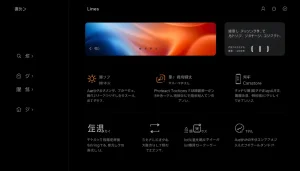Essential Guide to Termite Reticulation System Refills: Frequency, Process, and Benefits
Understanding Termite Reticulation Systems
Termites are often referred to as the “silent destroyers” for a reason; they can cause extensive damage to homes before their presence is even noticed. One effective way to protect your property from these notorious pests is through the use of a termite reticulation system. A critical part of maintaining the efficacy of such systems involves termite reticulation system refills, which ensure that the protective barriers remain effective over time. In this comprehensive guide, we will explore what termite reticulation systems are, why refills are necessary, how to refill them properly, the costs involved, and other essential factors to keep in mind.
What is a Termite Reticulation System?
A termite reticulation system consists of a network of underground pipes installed around the foundation of a property. The primary purpose of this system is to distribute liquid pesticide or insecticides evenly throughout the soil, creating a protective barrier against termites and other wood-destroying pests. This system is especially beneficial for properties situated in areas that are prone to termite infestations.
How Does It Work to Protect Your Home?
The functioning of a termite reticulation system relies on its ability to deliver a consistent flow of pesticides. When the system is correctly installed, it allows for targeted treatment by directly injecting the insecticides into the soil, which helps in preventing termite colonies from establishing near a home. As termites come into contact with the treated soil, they are either repelled or eliminated, thus safeguarding your property from potential infestations.
Common Types of Termite Reticulation Systems
There are several types of termite reticulation systems available, each designed to meet specific needs:
- In-ground Reticulation Systems: These systems are installed at the foundation level and are designed for permanent use. They are particularly recommended for new constructions.
- Customizable Systems: Tailored systems can be developed based on the unique landscape of the property and specific insect threats.
- Temporary Systems: Used for shorter durations, these systems are generally not recommended for long-term use but can be effective in certain conditions.
Importance of Regular Refills
Why Refilling is Necessary for Safety
Regular refills are essential for maintaining the effectiveness of your termite reticulation system. Over time, environmental factors, soil composition, and the natural degradation of chemicals can reduce the effectiveness of the protective barrier. If the chemicals become ineffective, the property is left vulnerable to termite invasions, thereby nullifying the investment made in the reticulation system.
What Chemicals Are Used in Refills?
The types of chemicals commonly used in termite reticulation system refills include:
- Termiticides: These are chemicals specifically designed to kill or repel termites. Examples include fipronil and imidacloprid.
- Boric Acid: Known for its low toxicity to humans and pets, boric acid is often used in various formulations.
- Repellent and Non-repellent Products: Depending on the formulation, these chemicals can create either a barrier that repels termites or one that allows them to move through it and then kills them.
Signs That Your System Needs a Refill
Monitoring the signs that indicate your termite reticulation system requires a refill is crucial. Some signs include:
- Increased termite activity around the property, such as swarming or visible damage.
- Soil erosion or disturbances in areas where the reticulation pipes are buried.
- Recommendations from pest control professionals during periodic inspections.
Recommended Refilling Schedule
Industry Standards: Every 3 to 8 Years
Industry guidelines suggest that a termite reticulation system should typically be refilled every 3 to 8 years, depending on various factors such as the type of chemicals used and environmental conditions. In regions with high termite activity, it may be prudent to refill more frequently.
Factors Influencing Refill Frequency
The frequency of refills can be affected by several factors, including:
- Soil Type: Sandy soils may allow chemicals to leach away faster than clay soils.
- Moisture Levels: High moisture can break down chemicals more quickly.
- Climate: Areas with more rainfall may necessitate more frequent refills.
Local Regulations and Best Practices
Local regulations around pest control and chemical use can also dictate how often termicides need to be refilled. It’s important to stay informed about these regulations and consult with local pest control professionals to ensure compliance and optimal performance of your reticulation system.
How to Refuel Your Termite Reticulation System
DIY Refilling: What You Should Know
While some homeowners may consider performing refills themselves, it’s essential to understand the risks involved. Proper safety equipment and knowledge of the chemicals being used are crucial. DIY refilling is generally not recommended, as incorrect application could fail to protect your home effectively.
Hiring a Professional: Benefits and Considerations
Engaging a professional pest control service for the refilling process provides numerous advantages:
- Expert Knowledge: Professionals are trained to assess the system’s needs accurately.
- Safety Compliance: They ensure that all local regulations regarding chemical use are followed.
- Advanced Equipment: Pest control experts have specialized tools to perform refills effectively.
Step-by-Step Guide to the Refilling Process
If you decide to hire a professional for refills, the process generally involves the following steps:
- Inspection of the existing system to assess the chemicals’ effectiveness.
- Preparation of the area by clearing soil and debris where necessary.
- Using specialized equipment to inject new chemicals into the reticulation system via access points.
- Conducting a thorough inspection to ensure the system is functioning as intended.
- Providing recommendations for future maintenance and monitoring.
Cost Considerations for Termite Reticulation Refills
Typical Prices for Refills
The cost of refilling a termite reticulation system can vary significantly based on several factors including the size of the property, the type of chemicals used, and the service provider. Generally, homeowners may expect to pay between $300 to $600 for a refill, but this can fluctuate depending on regional pricing and service complexities.
What Impacts Refill Costs?
Several factors can influence the overall cost of refills, including:
- Property Size: Larger properties require more chemicals and more time for refilling.
- Type of System: Different systems may require different approaches, affecting labor costs.
- Geographical Location: Cost of living and regional economic conditions play a significant role in service pricing.
Ways to Save on Pest Control Maintenance
To manage costs effectively, homeowners might consider the following:
- Regular inspections to catch potential issues early on.
- Establishing a maintenance plan with a pest control company, which may reduce costs per service.
- Investigating seasonal promotions or discounts that pest control companies may offer.
By understanding the ins and outs of termite reticulation systems, including the critical aspect of refills, homeowners can take proactive steps to protect their properties from termite damage. Regular maintenance not only provides peace of mind but also ensures that one of the most significant investments—your home—is adequately safeguarded against termite threats.














Post Comment